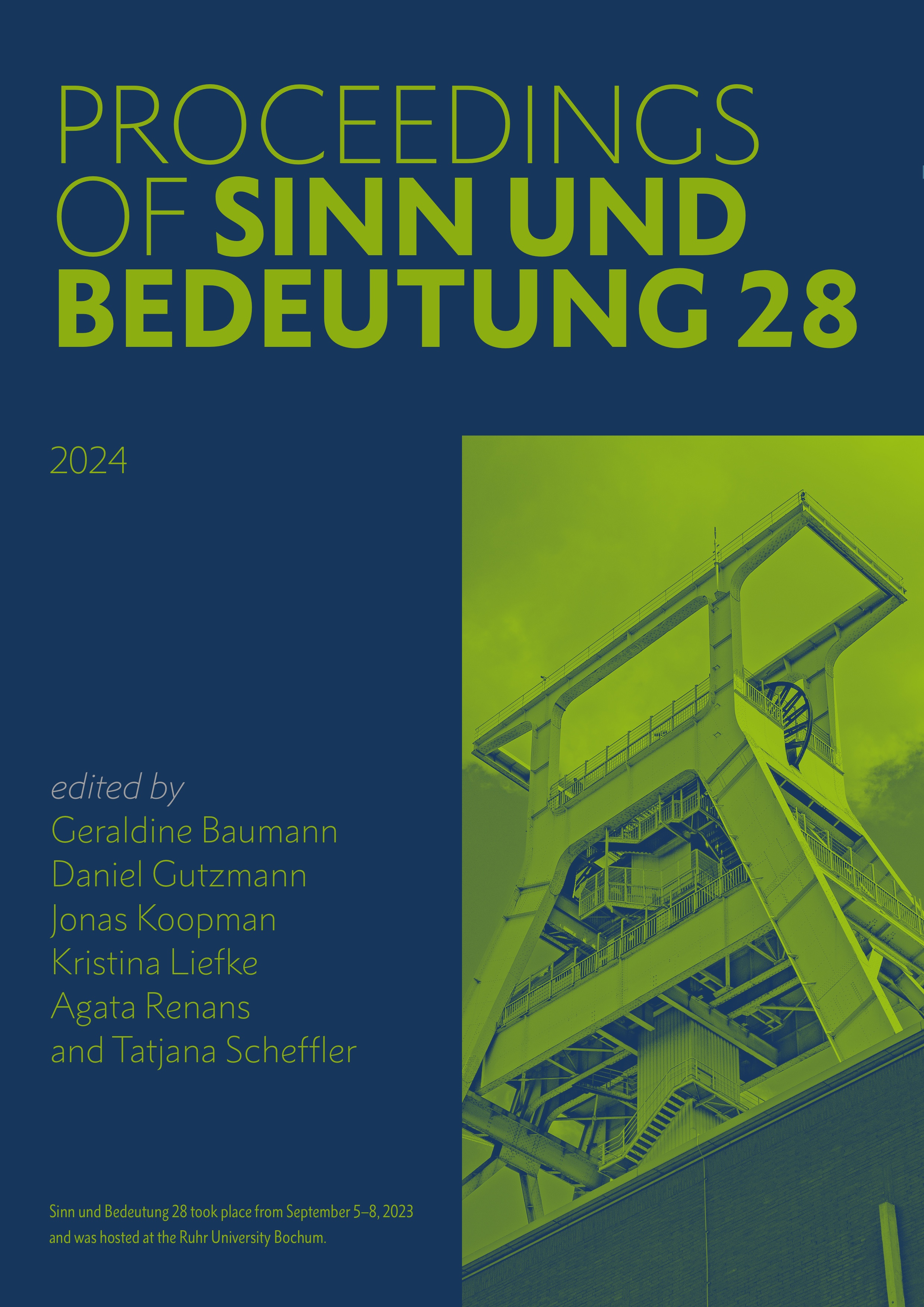On the natural language metaphysics of amounts
DOI:
https://doi.org/10.18148/sub/2024.v28.1105Abstract
In DPs like 'the amount of nuts you ate' or 'the number of cooks you hired', a quantity noun ('amount', 'number') combines with an entity noun ('nuts', 'cooks'). Such 'quantity DPs' are surprisingly flexible: they can saturate not only quantity predicates, like 'be 50 grams 'or 'be three', but also predicates of ordinary entities, like 'eat' or 'hire'. To explain this flexibility, Scontras (2017) takes quantity DPs to denote not primitive quantities like 50g or 3, but set theoretic constructs that somehow 'contain' the entities described by the entity noun (e.g., nuts or cooks). We explore a choice point in developing this approach: the relevant set theoretic structures—we call them 'rich amounts'—can be construed either as sets of entities, given by the entity noun’s extension, or as properties, based on the entity noun’s intension. We show that this choice constitutes a dilemma. The dilemma arises with reference to quantity DPs without modifiers (e.g., the amount of nuts) and quantity DPs with relativization from an intensional context (e.g., 'the amount of nuts you want to eat'). Construing rich amounts as sets of entities yields a credible analysis of the former data, but not of the latter. Construing them as properties can capture the latter data, but requires auxiliary assumptions without independent support to accommodate the former. As the two choices exhaust the relevant analytical possibilities, the dilemma questions the utility of rich amounts for semantic composition.Downloads
Published
2024-12-20
How to Cite
Alonso-Ovale, L., & Schwarz, B. (2024). On the natural language metaphysics of amounts. Proceedings of Sinn Und Bedeutung, 28, 18–35. https://doi.org/10.18148/sub/2024.v28.1105
Issue
Section
Articles
License
Copyright (c) 2024 Luis Alonso-Ovale, Bernhard Schwarz

This work is licensed under a Creative Commons Attribution 4.0 International License.
https://creativecommons.org/licenses/by/4.0/
